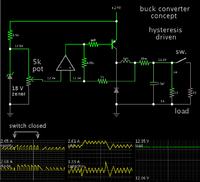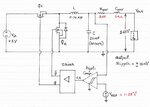cmos_ajay
Full Member level 2

- Joined
- Jan 30, 2007
- Messages
- 126
- Helped
- 0
- Reputation
- 0
- Reaction score
- 0
- Trophy points
- 1,296
- Activity points
- 2,247
Hello,
I need to design a fast slew rate , load transient response Step-down power converter. The load is a microprocessor used in desktop application. Does someone know how to select the inductor L and capacitor value ?
How do we determine the number of capacitors in parallel based on transient response conditions ?
I had read one paper called Optimal output filter design for microprocessor or DSP power supply...........but its difficult to understand. Does anyone have a better approach ?
Regards.
I need to design a fast slew rate , load transient response Step-down power converter. The load is a microprocessor used in desktop application. Does someone know how to select the inductor L and capacitor value ?
How do we determine the number of capacitors in parallel based on transient response conditions ?
I had read one paper called Optimal output filter design for microprocessor or DSP power supply...........but its difficult to understand. Does anyone have a better approach ?
Regards.




